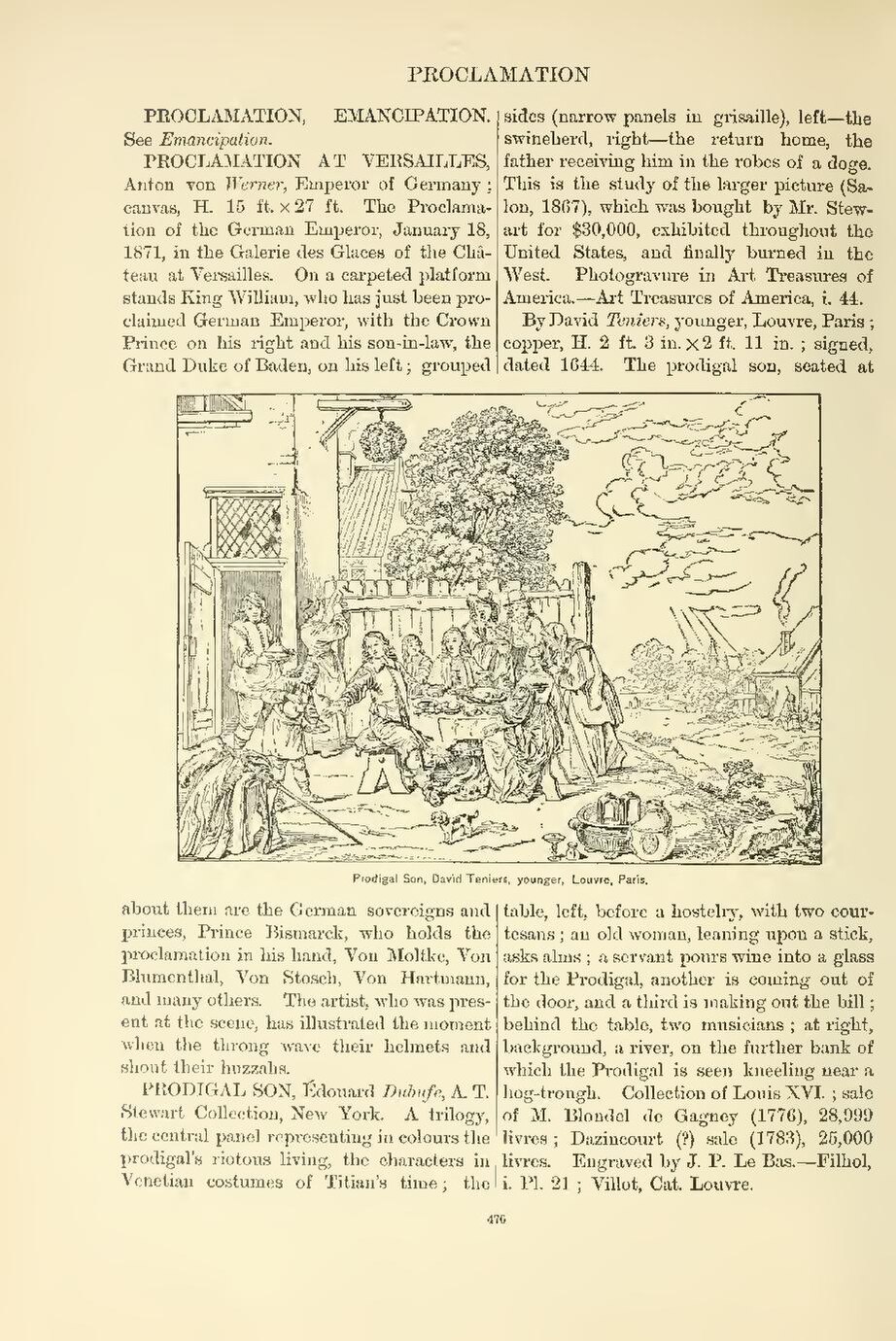PROCLAMATION, EMANCIPATION. See Emancipation.
PROCLAMATION AT VERSAILLES,
Anton von Werner, Emperor of Germany;
canvas, H. 15 ft. × 27 ft. The Proclamation
of the German Emperor, January 18,
1871, in the Galerie des Glaces of the Château
at Versailles. On a carpeted platform
stands King William, who has just been proclaimed
German Emperor, with the Crown
Prince on his right and his son-in-law, the
Grand Duke of Baden, on his left; grouped
about them are the German sovereigns and
princes, Prince Bismarck, who holds the
proclamation in his hand, Von Moltke, Von
Blumenthal, Von Stosch, Von Hartmann,
and many others. The artist, who was present
at the scene, has illustrated the moment
when the throng wave their helmets and
shout their huzzahs.
An image should appear at this position in the text. To use the entire page scan as a placeholder, edit this page and replace "{{missing image}}" with "{{raw image|Cyclopedia of painters and paintings (IA cyclopediaofpain03cham).pdf/498}}". Otherwise, if you are able to provide the image then please do so. For guidance, see Wikisource:Image guidelines and Help:Adding images. |
Prodigal Son, David Teniers, younger, Louvre, Paris.
PRODIGAL SON, Édouard Dubufe, A. T.
Stewart Collection, New York. A trilogy,
the central panel representing in colours the
prodigal's riotous living, the characters in
Venetian costumes of Titian's time; the
sides (narrow panels in grisaille), left—the
swineherd, right—the return home, the
father receiving him in the robes of a doge.
This is the study of the larger picture (Salon,
1867), which was bought by Mr. Stewart
for $30,000, exhibited throughout the
United States, and finally burned in the
West. Photogravure in Art Treasures of
America.—Art Treasures of America, i. 44.
By David Teniers, younger, Louvre, Paris; copper, H. 2 ft. 3 in. × 2 ft. 11 in.; signed, dated 1644. The prodigal son, seated at table, left, before a hostelry, with two courtesans; an old woman, leaning upon a stick, asks alms; a servant pours wine into a glass for the Prodigal, another is coming out of the door, and a third is making out the bill; behind the table, two musicians; at right, background, a river, on the further bank of which the Prodigal is seen kneeling near a hog-trough. Collection of Louis XVI.; sale of M. Blondel de Gagney (1776), 28,999 livres; Dazincourt (?) sale (1783), 25,000 livres. Engraved by J. P. Le Bas.—Filhol, i. Pl. 21; Villot, Cat. Louvre.
